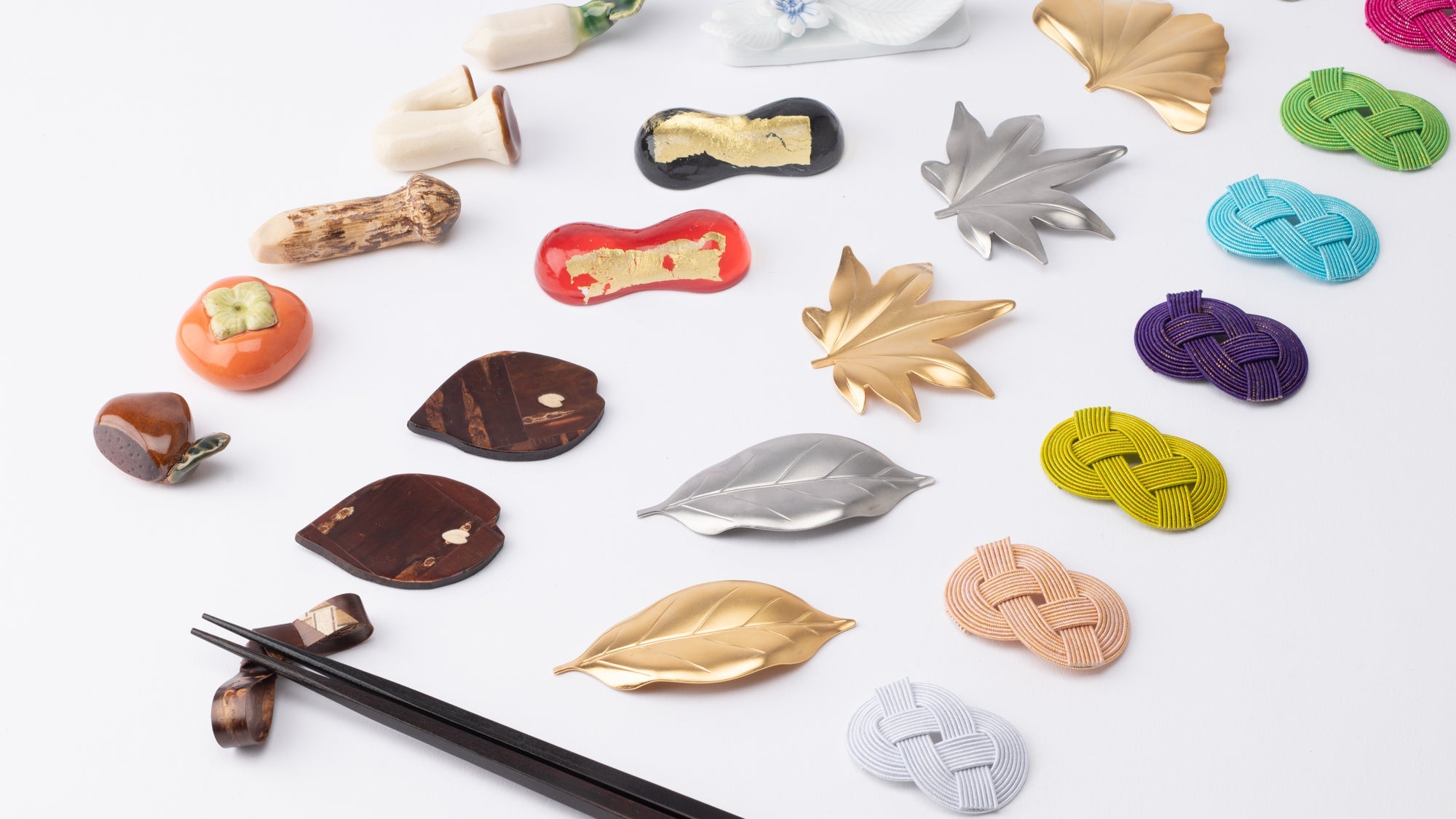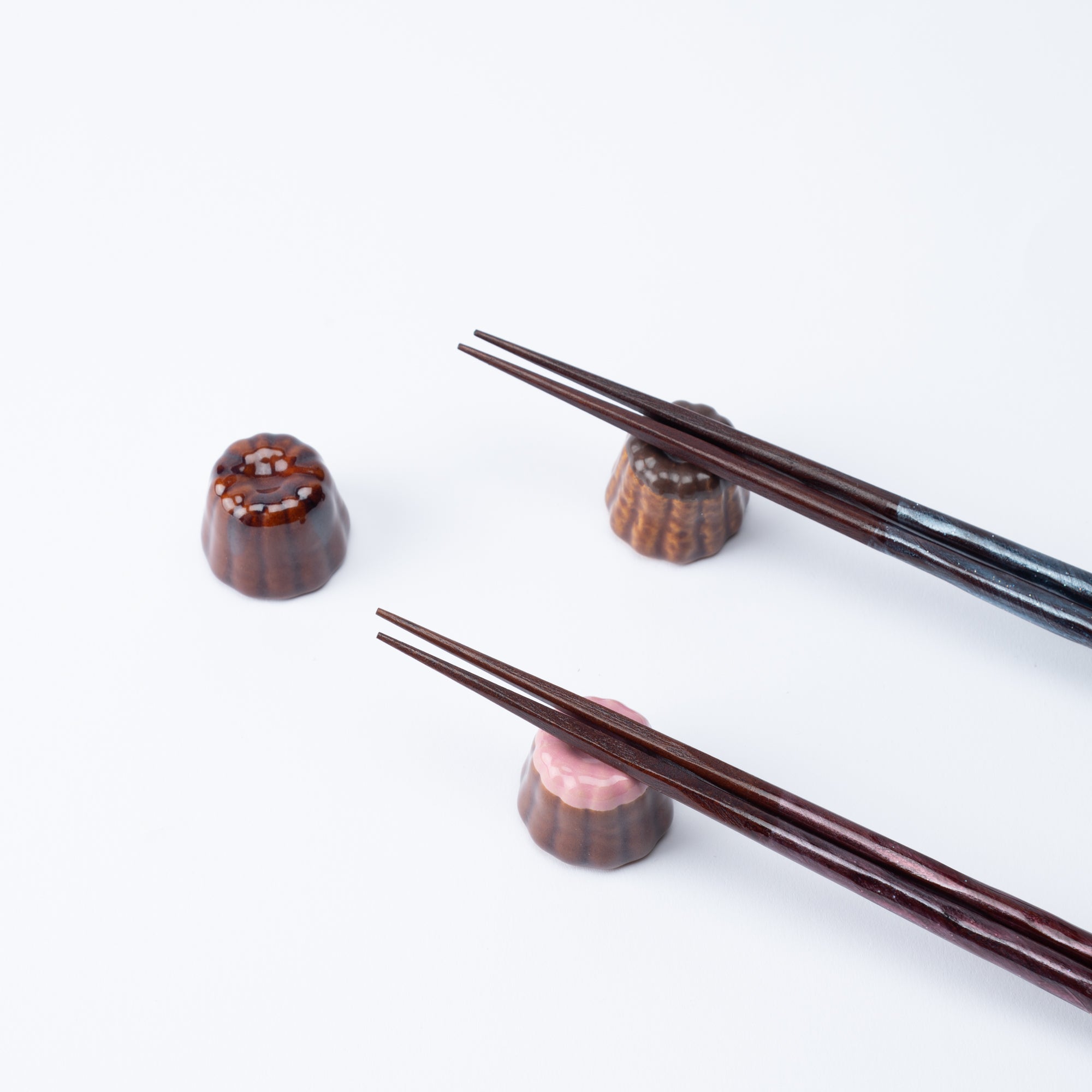
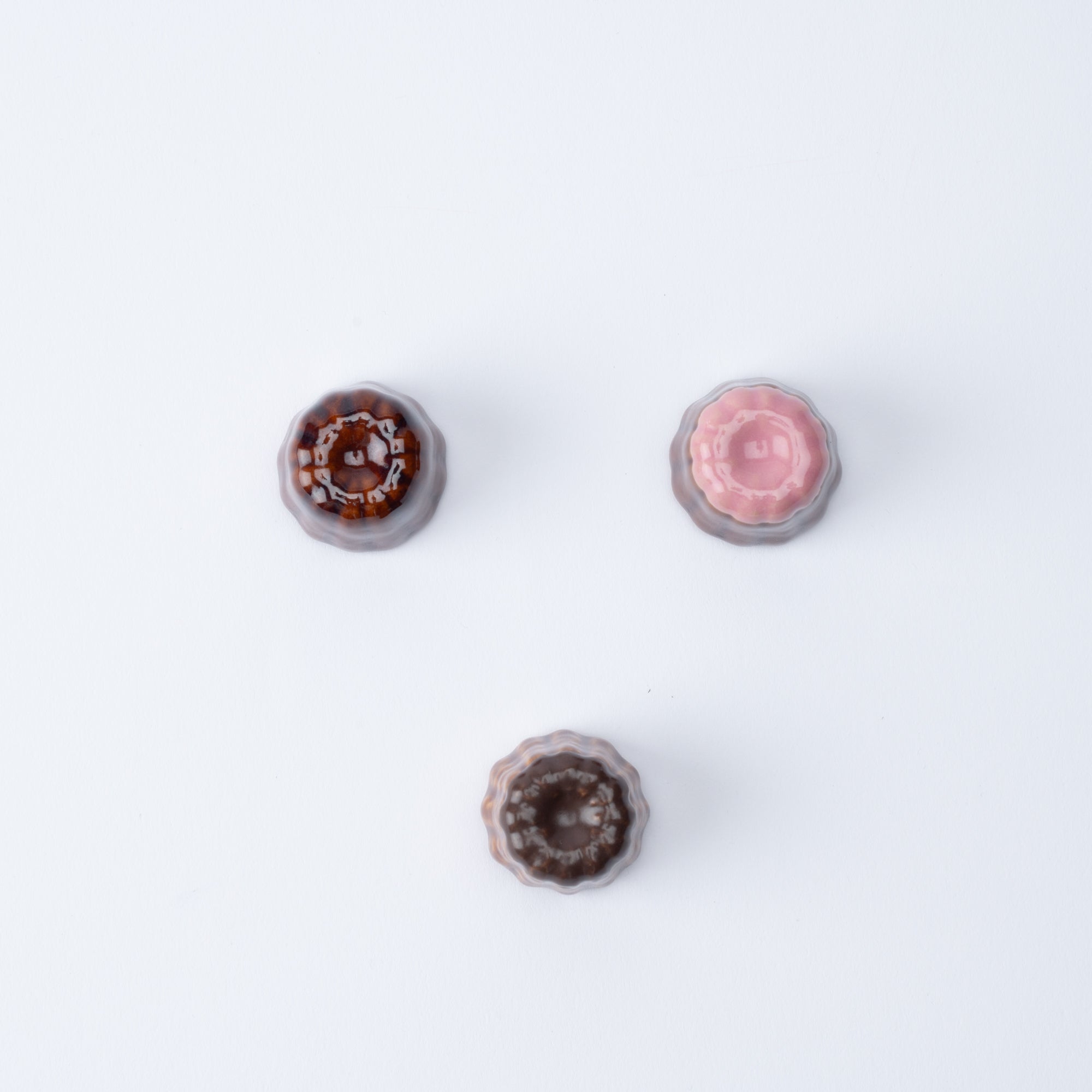
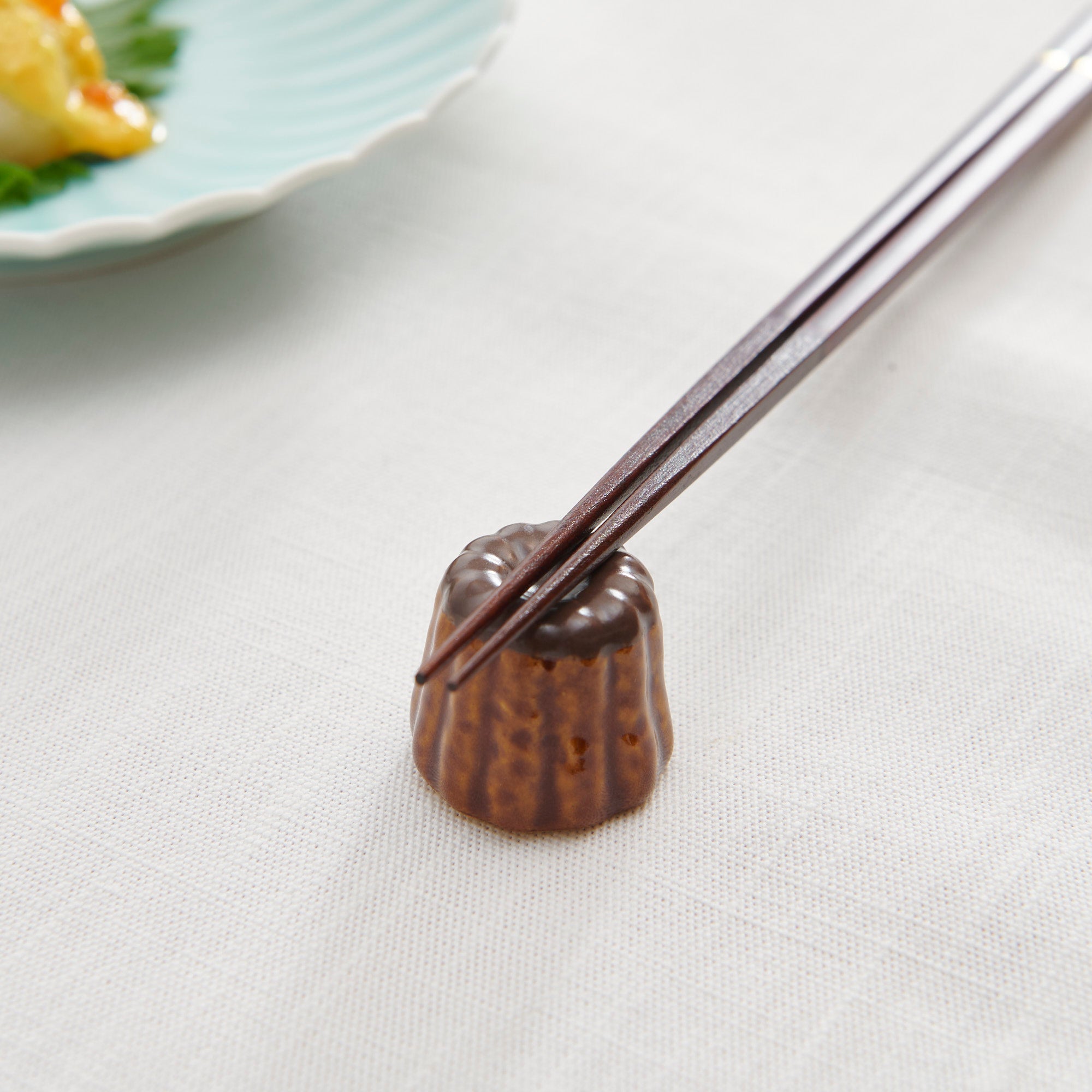
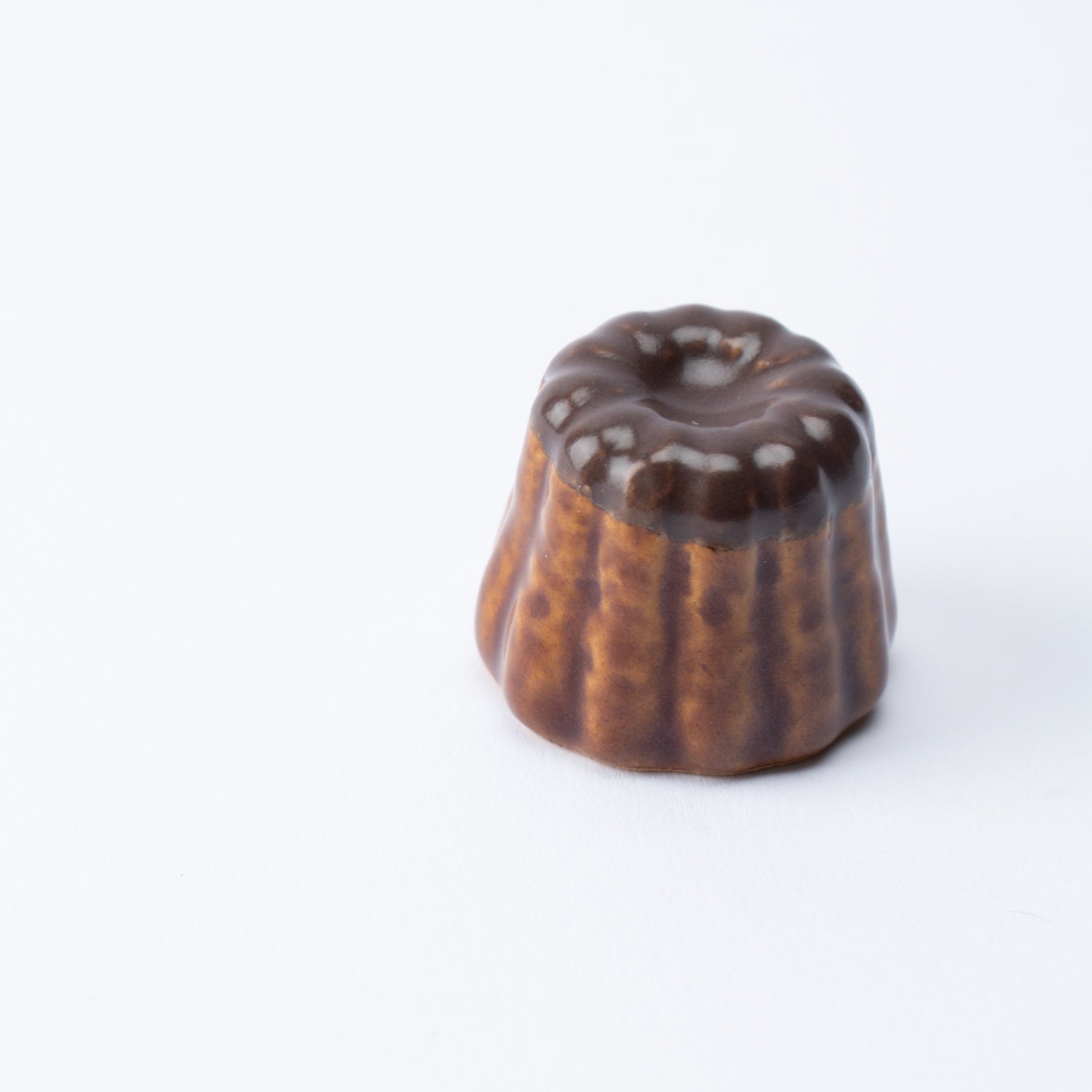
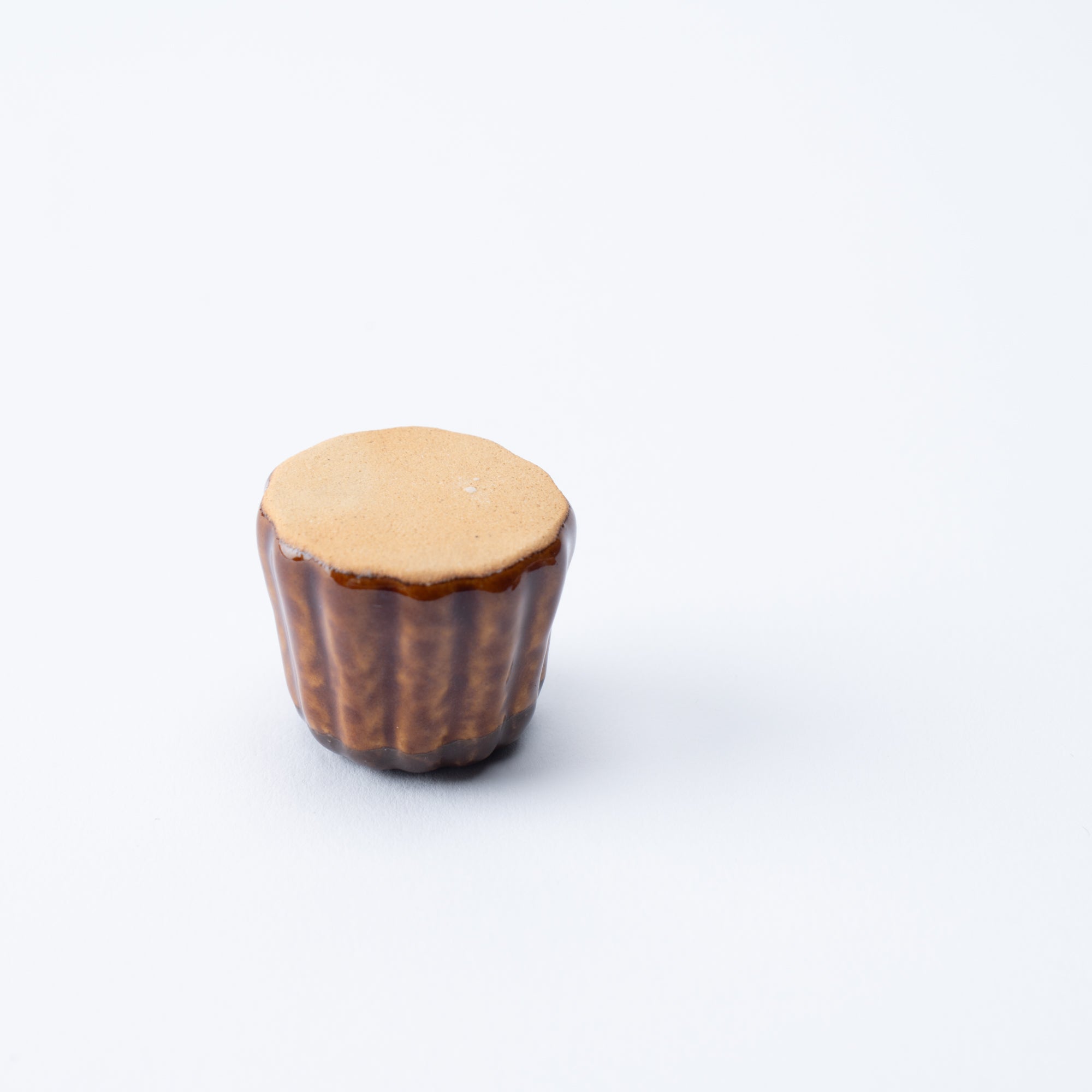
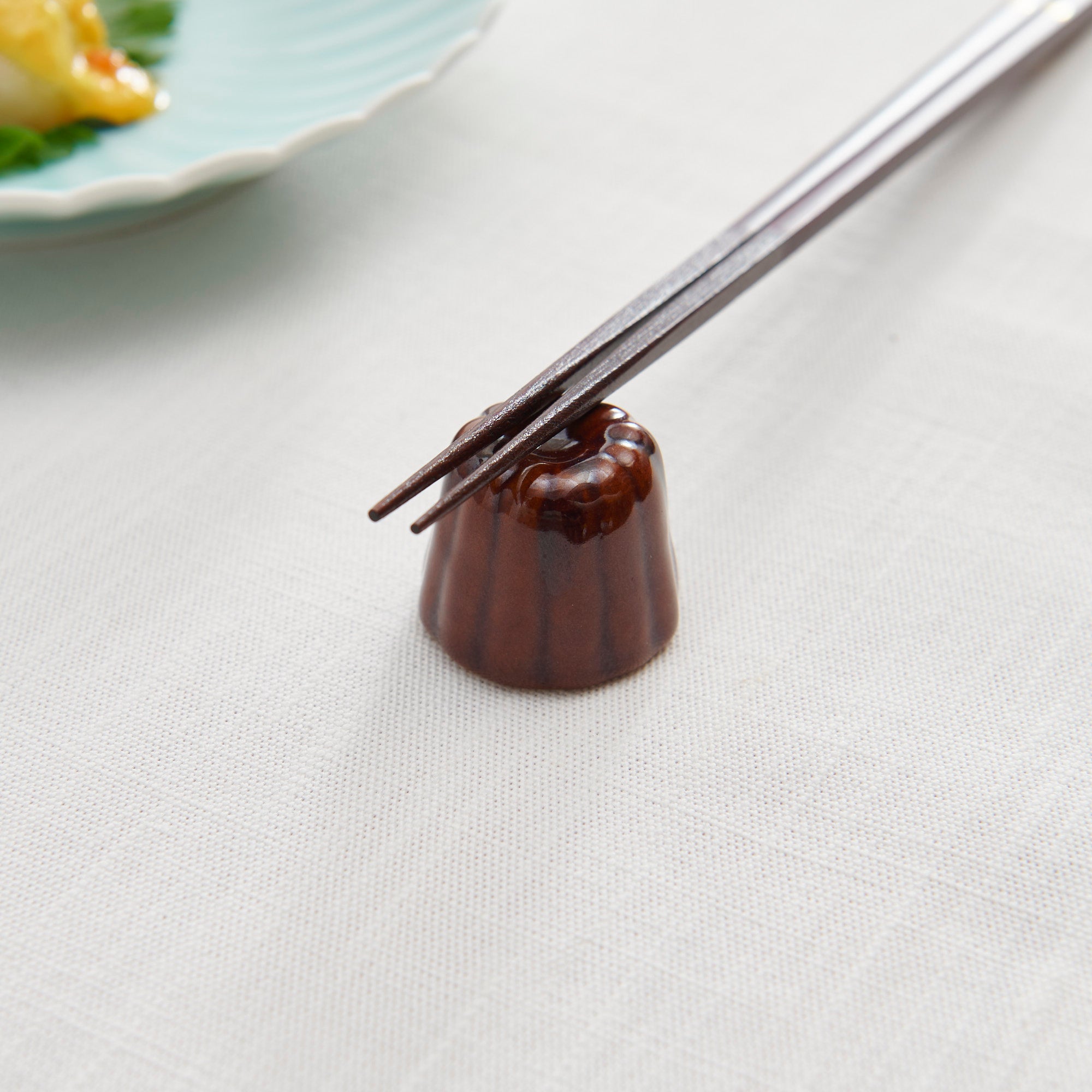
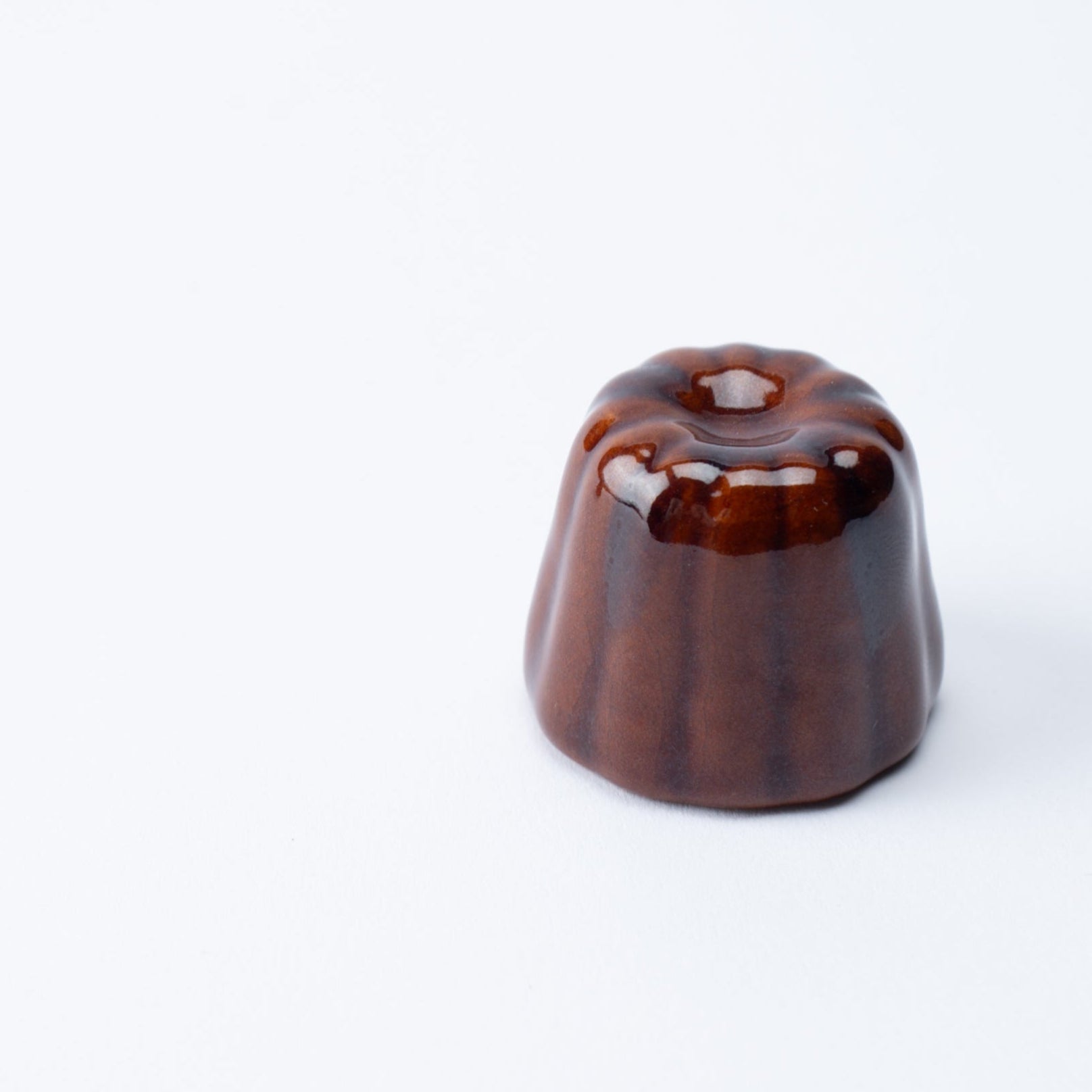
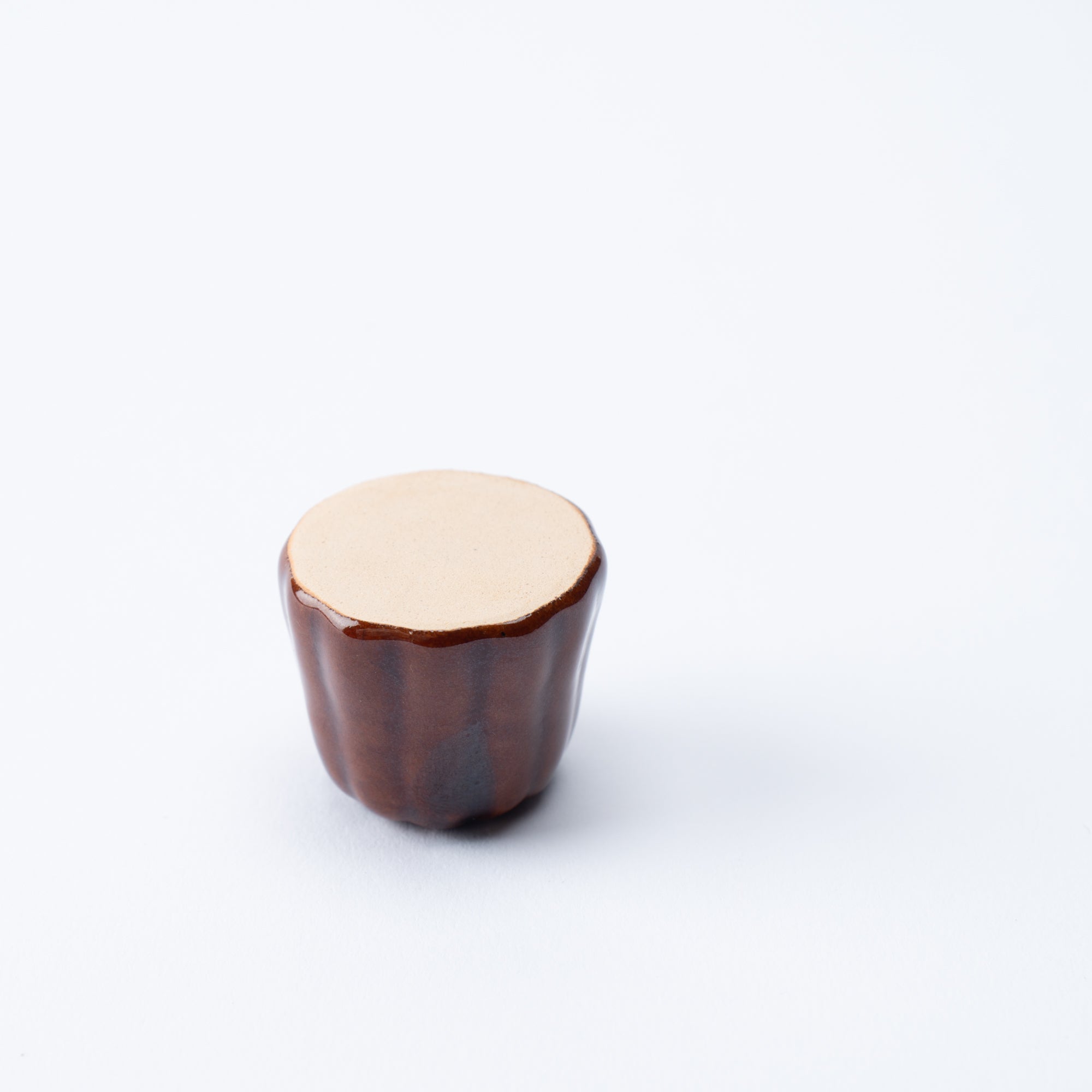
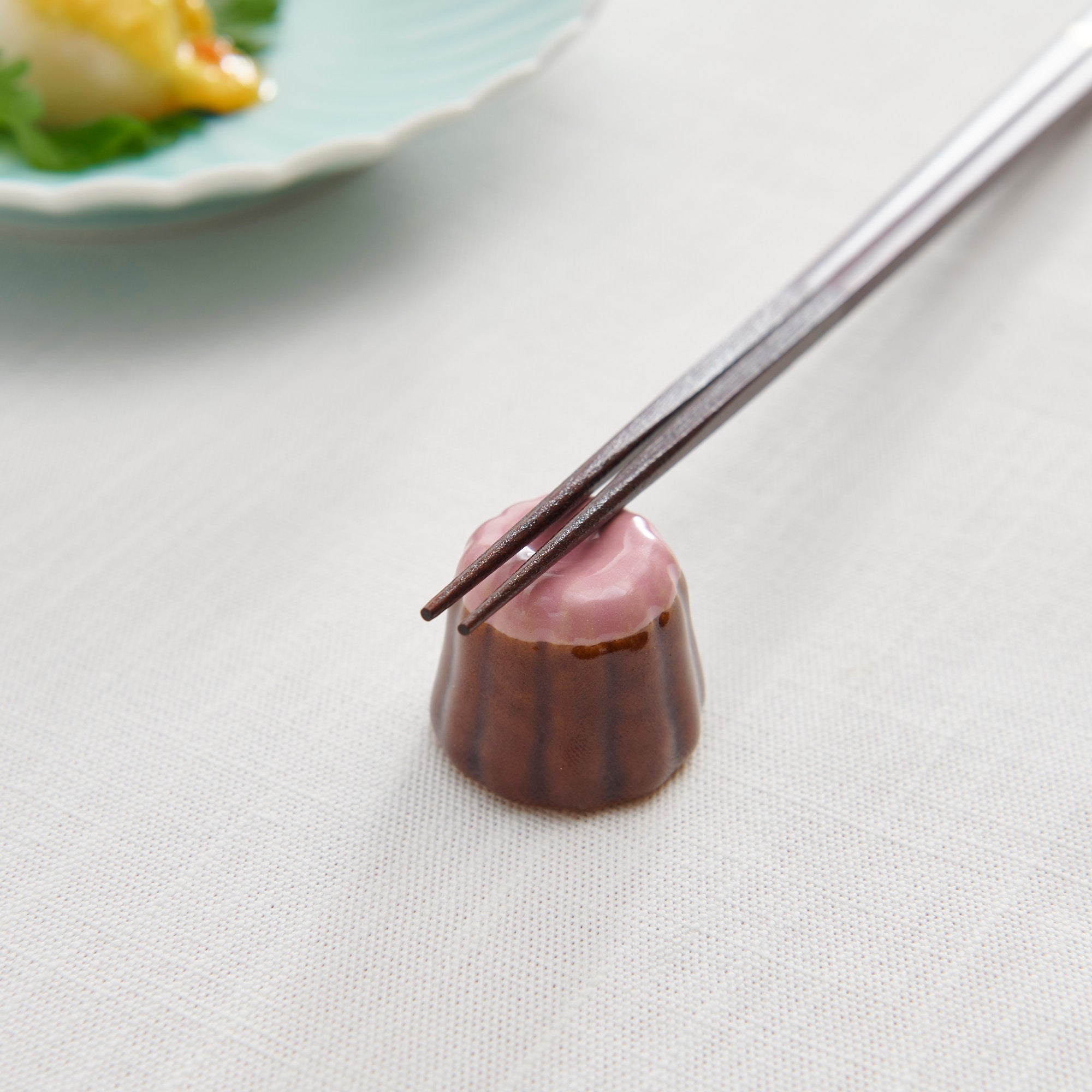
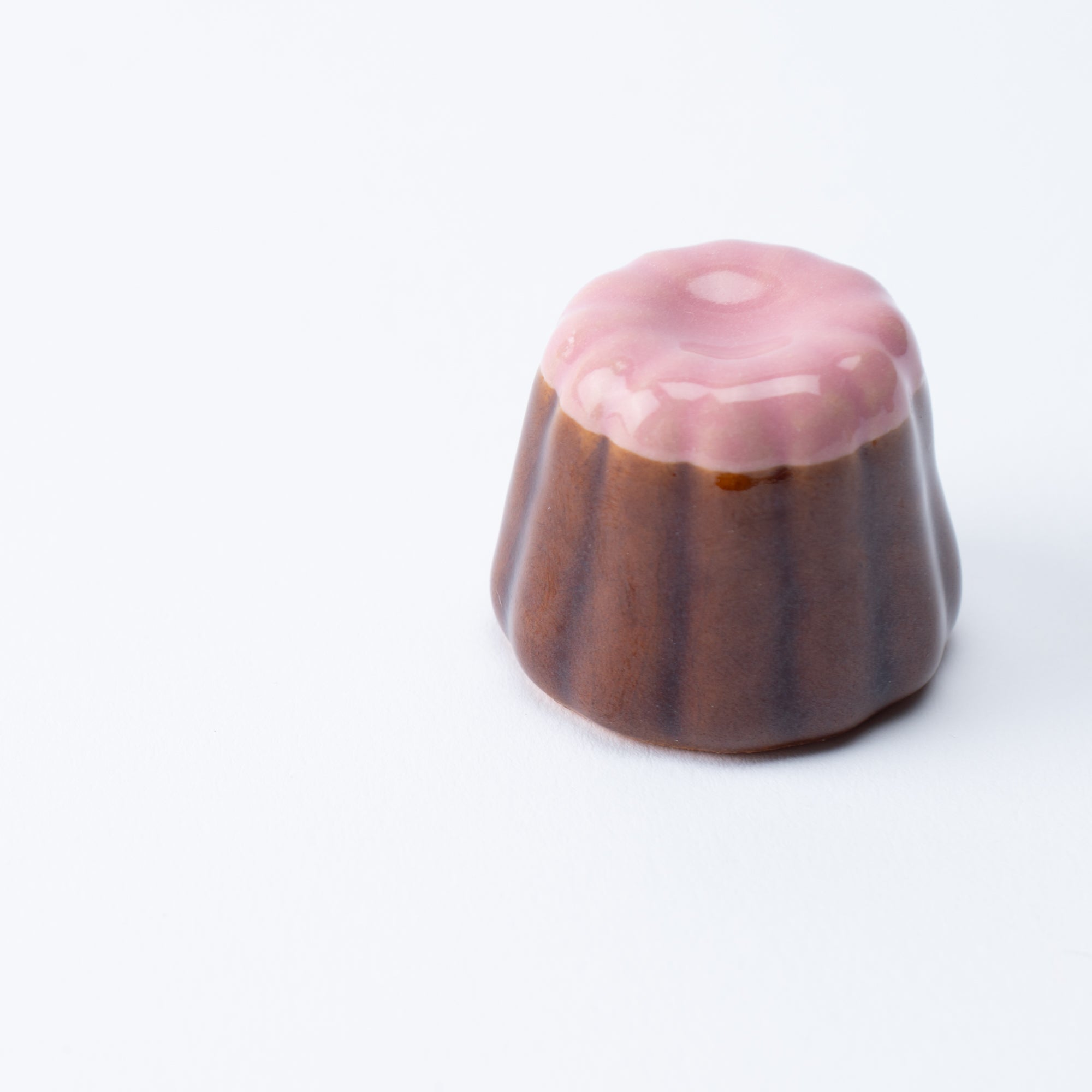

Canelé-Essstäbchenablage
Estimated Shipping Widget will be displayed here!
Diese Essstäbchenablagen fangen die entzückenden Details und die Authentizität von Canelés ein. Sie sind oben und an den Seiten wunderbar glänzend und glatt und erinnern an die köstliche Karamellisierung eines echten Canelés, während die goldbraune, matt strukturierte Unterseite ihnen das Gefühl vermittelt, als kämen sie direkt aus dem Backofen.
Diese Essstäbchenablagen bieten außergewöhnliche Funktionalität, indem sie verhindern, dass die Spitzen der Stäbchen den Tisch berühren. Dank ihres verspielten Designs eignen sie sich perfekt für Kinder und Erwachsene. Kombinieren Sie sie mit anderen aus der gleichen Serie oder kombinieren Sie sie für noch mehr Stilmöglichkeiten. Sie eignen sich auch hervorragend als Sammlerstücke oder kleine, aufmerksame Geschenke.
In Japan sind Essstäbchenablagen ein zentrales Element der Tischdekoration. Dieses Geschirr ist klein, aber im Geiste groß und bietet tolle Möglichkeiten, Ihren persönlichen Stil zur Schau zu stellen, es der Jahreszeit anzupassen oder die richtige Stimmung für festliche Anlässe zu schaffen.
EINZELHEITEN
| Quantity | 1 |
| Size | D 3.0 cm (1.2 in) x H 3.0 cm (1.2 in) |
| Weight | 30 g (1.1 oz) |
| Material | Stoneware |
| Microwave | No |
| Dishwasher | No |
Hersteller / Marke
Ihoshiro Kiln wurde 2007 in Mizunami City in der Präfektur Gifu, einer Stadt mit reicher Natur, gegründet. Es handelt sich um ein Keramikstudio, das originelle Essstäbchenablagen mit Blick auf „Gefühle und Hände“ herstellt.
Derzeit stellen täglich mehr als 20 Kunsthandwerker niedliche Essstäbchenablagen her. Sie entwerfen Essstäbchenablagen, kleine Keramikstücke, die die Herzen der Menschen höher schlagen lassen.
Ihre Essstäbchenablagen vermitteln das Gefühl der Jahreszeit und den Geist der Gastfreundschaft und haben die Kraft, den Esstisch zu verändern. Die Wünsche, die sie in diese kleinen Essstäbchenablagen stecken, werden Ihr Esserlebnis mit Sicherheit bereichern.

Kunsthandwerk
Mino-Ware, die in der Region Tono in der Präfektur Gifu hergestellt wird, ist in der japanischen Töpferei für ihr reiches Erbe und ihre Vielseitigkeit bekannt. Sie umfasst über fünfzehn verschiedene Stile und ist damit vielfältiger als viele andere japanische Keramiken.
Mittlerweile macht Mino-Keramik über 50 Prozent der japanischen Keramikproduktion aus und ist unübertroffen beliebt. Mino-Keramik wurde 1978 als traditionelles Handwerk anerkannt und spiegelt eine Mischung aus historischer Tiefe und moderner Relevanz wider – ein Beispiel für außergewöhnliche Handwerkskunst.
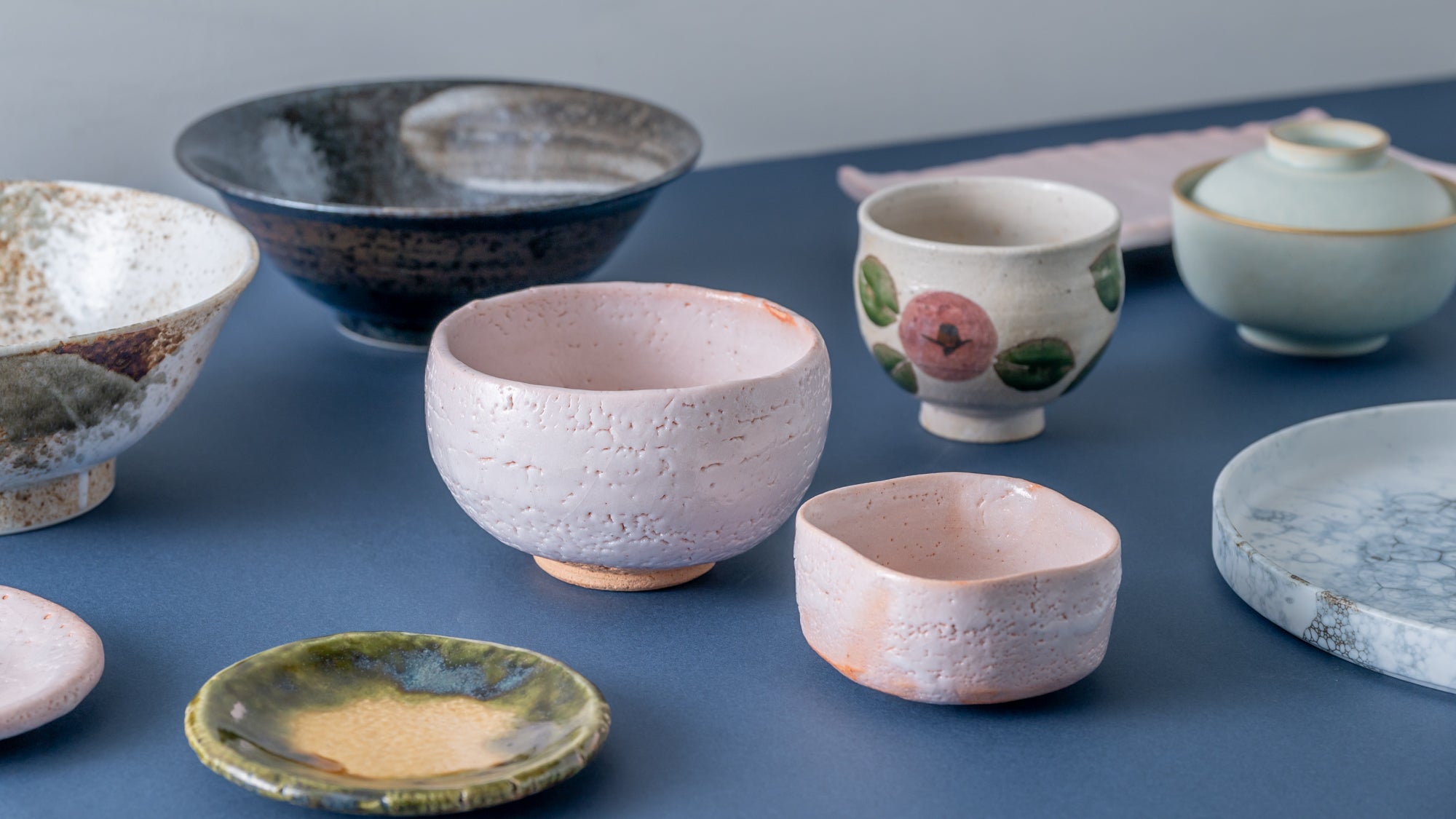
Optionen auswählen











Estimated Shipping Widget will be displayed here!
Essstäbchenablagen
Essstäbchenhalter verleihen Ihrem Tisch einen Hauch japanischen Stils. Eine Mischung aus Alltagsgegenständen und besonderen Anlässen macht Ihren Tisch für jeden Anlass bereit. Wir haben handgefertigte Essstäbchenhalter aus ganz Japan ausgewählt, um Ihr kulinarisches Erlebnis noch angenehmer zu gestalten. Von verspielten Porzellanformen bis hin zu eleganten Metalldesigns verleihen diese kleinen Akzente jedem Ambiente einen besonderen Charme.
